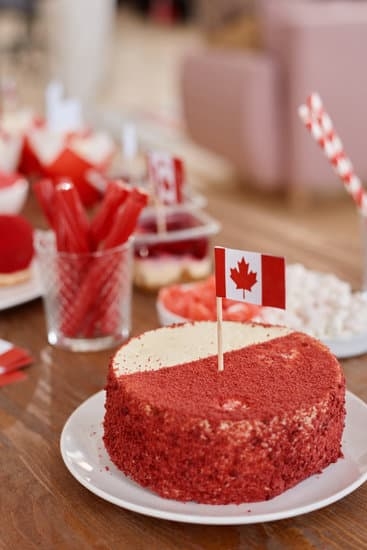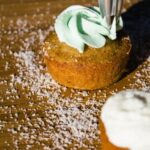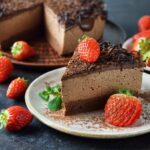Liquid glucose is a common ingredient in cake decorating that serves multiple purposes in creating delicious and visually appealing cakes. In this article, we will explore what liquid glucose is used for in cake decorating, its role in cake making, the benefits of incorporating it into your recipes, how to effectively use it, common mistakes to avoid, and alternative ingredients you can use.
When it comes to enhancing the texture and flavor of cakes, liquid glucose plays a key role. It helps improve moisture retention, prevent crystallization of sugars, and add a smooth consistency to frosting and glazes. Understanding the functions of liquid glucose is essential for achieving professional-looking results in your cake decorating endeavors.
Aside from its technical aspects, using liquid glucose in cake decorating offers practical benefits as well. It can help extend the shelf life of your baked goods, enhance their appearance with a glossy finish, and provide a stable base for intricate decorations. Whether you are a seasoned baker or just starting out in the world of cake decorating, incorporating liquid glucose into your recipes can elevate the quality of your creations.
The Role of Liquid Glucose in Cake Making
Liquid glucose plays a crucial role in cake making, especially in the realm of cake decorating. This versatile ingredient is often used to add sweetness, moisture, and shine to cakes. When it comes to creating stunning designs and intricate decorations on cakes, liquid glucose serves as a key component in achieving the desired results. Its unique properties make it an essential tool for bakers looking to take their cake decorating skills to the next level.
One of the main purposes of using liquid glucose in cake making is its ability to prevent crystallization. When sugar crystals form in cakes, it can result in a gritty texture that is less than ideal for decorating. Liquid glucose helps inhibit the crystallization process, ensuring that cakes remain smooth and creamy, providing a perfect canvas for decorating with frosting, fondant, or other decorative elements.
Moreover, liquid glucose also acts as a binding agent in cake recipes, helping ingredients hold together more effectively. This is particularly useful when creating intricate designs or structures on cakes that require additional stability. By incorporating liquid glucose into cake batters or icings, bakers can ensure that their creations withstand the test of time and maintain their shape throughout the decorating process and beyond.
| Benefits of Using Liquid Glucose | How to Incorporate Liquid Glucose |
|---|---|
| Prevents crystallization | Add to cake batter or icing |
| Adds moisture and shine | Mix with other wet ingredients |
| Acts as a binding agent | Use in creating sugar decorations |
Benefits of Using Liquid Glucose in Cake Decorating
Liquid glucose is a common ingredient in cake decorating that serves multiple purposes beyond just adding sweetness. One of the key benefits of using liquid glucose in cake decorating is its ability to prevent crystallization in sugar syrup, which helps create smooth and shiny finishes on cakes. This is particularly useful when creating glossy glazes or mirror glazes for cakes, as it helps achieve that flawless, professional look.
In addition to its role in preventing crystallization, liquid glucose also acts as a humectant, meaning it retains moisture and keeps baked goods like cakes moist and fresh for longer periods. This is especially important in cake decorating, where the appearance and taste of the final product are equally crucial. By incorporating liquid glucose into your cake recipes, you can ensure that your creations not only look stunning but also taste delicious and stay fresh.
Furthermore, liquid glucose can enhance the texture of cakes by providing a soft and moist crumb that is ideal for layering and sculpting intricate designs. Its ability to improve the mouthfeel of cakes makes it a favorite among professional bakers and cake decorators alike. Whether you are making a simple birthday cake or an elaborate wedding cake, incorporating liquid glucose can take your creations to the next level by providing a superior texture and flavor profile.
| Benefits of Using Liquid Glucose | In Cake Decorating |
|---|---|
| Prevents crystallization in sugar syrup | Creates smooth and shiny finishes on cakes |
| Acts as a humectant | Retains moisture and freshness in baked goods |
| Enhances texture of cakes | Provides soft and moist crumb ideal for layering and sculpting designs |
How to Incorporate Liquid Glucose in Cake Recipes
Liquid glucose is a versatile ingredient that can be incorporated into various cake recipes to achieve specific textures, flavors, and appearances. Here are some ways you can use liquid glucose in your cake baking:
- Moisture Retention: Liquid glucose helps retain moisture in cakes, preventing them from drying out quickly. You can substitute a portion of the sugar in your recipe with liquid glucose to keep your cakes moist for longer periods.
- Smooth Texture: Adding liquid glucose to buttercream frosting or ganache can help create a smooth and glossy finish. It also prevents crystallization, resulting in a creamier texture.
- Binding Agent: Liquid glucose acts as a binding agent in cake recipes, holding ingredients together and providing structure. This is particularly useful when working with delicate or intricate cake designs.
Incorporating liquid glucose into your cake recipes requires some adjustments to ensure the desired results. Here are some tips on how to efficiently incorporate this ingredient into your baking:
- Adjusting Sugar Levels: When using liquid glucose, it’s essential to reduce the amount of granulated sugar in the recipe to maintain the right balance of sweetness.
- Temperature Control: Heating liquid glucose slightly before adding it to your batter or frosting can make it easier to mix and distribute evenly. Be cautious not to overheat it, as it may alter the consistency of your final product.
- Mixing Techniques: Incorporate liquid glucose slowly into your batter or frosting while mixing continuously. This will prevent lumps and ensure a homogeneous distribution throughout the mixture.
By following these techniques and tips, you can effectively incorporate liquid glucose into your cake recipes, enhancing their overall quality and appeal. Experimenting with this ingredient can open up new creative possibilities in cake decorating and elevate the taste and appearance of your baked creations.
Techniques for Using Liquid Glucose in Cake Decorating
Glaze and Icing
When it comes to cake decorating, using liquid glucose can enhance the texture and appearance of your glazes and icings. Liquid glucose helps prevent crystallization in sugar-based recipes, creating a smooth and glossy finish. To use liquid glucose in your glazes and icings, simply substitute a portion of the sugar with liquid glucose. This will help ensure a more stable and professional-looking result.
Fondant and Gum Paste
Liquid glucose is often used in fondant and gum paste recipes to improve elasticity and pliability. Adding liquid glucose to these mixtures can make them easier to work with, allowing you to create intricate designs and decorations with ease. When incorporating liquid glucose into fondant or gum paste, knead it thoroughly to ensure it is evenly distributed throughout the mixture.
Modeling Chocolate
Modeling chocolate is a versatile medium for cake decorating that can be shaped into various forms, from flowers to figurines. Liquid glucose can be added to modeling chocolate recipes to help achieve a smoother texture and prevent cracking when molding or sculpting. To use liquid glucose in modeling chocolate, heat it gently before adding it to the melted chocolate mixture until fully incorporated. The resulting modeling chocolate will be pliable and easy to shape according to your design needs.
By incorporating these techniques for using liquid glucose in cake decorating, you can elevate your creations to new heights. Experimenting with different applications of liquid glucose can open up a world of possibilities for enhancing the appearance and quality of your cakes. Mastering the use of liquid glucose will give you the confidence to tackle more advanced decorating techniques and achieve professional results that will impress any audience.
Common Mistakes to Avoid When Using Liquid Glucose
When using liquid glucose in cake decorating, it is important to be aware of some common mistakes that can occur. By understanding these pitfalls, you can ensure that your cakes turn out perfectly every time.
Overheating the Liquid Glucose
One common mistake when using liquid glucose in cake decorating is overheating it. Liquid glucose has a low melting point, so it is essential to handle it carefully to prevent scorching or caramelization. If the liquid glucose gets too hot, it can alter the texture and consistency of your cake decorations. To avoid this mistake, heat the liquid glucose gently over a double boiler or in short bursts in the microwave.
Using the Wrong Ratio of Liquid Glucose
Another mistake to avoid is using the wrong ratio of liquid glucose in your cake decorating creations. Too much liquid glucose can make your decorations too soft and sticky, while too little can cause them to become brittle and break easily. It is crucial to follow recipe instructions carefully and measure out the right amount of liquid glucose for each project.
Not Allowing Enough Time for Cooling and Setting
Lastly, one common mistake people make when using liquid glucose in cake decorating is not allowing enough time for their creations to cool and set properly. Liquid glucose needs time to harden and set, so rushing this process can result in droopy or misshapen decorations. Make sure to give your cake decorations ample time to cool and set before handling or storing them.
Alternative Ingredients for Liquid Glucose in Cake Decorating
Liquid glucose is a common ingredient in cake decorating that serves as a versatile tool for bakers seeking to achieve the perfect consistency and finish on their cakes. However, there are times when you may not have liquid glucose on hand or may prefer to explore alternative options. Here are some alternatives you can consider using in place of liquid glucose:
- Corn Syrup: Corn syrup is a readily available substitute for liquid glucose in cake decorating. It has a similar thick and sticky consistency that helps hold ingredients together and adds moisture to your cakes.
- Honey: Honey is another natural alternative to liquid glucose that can be used in cake decorating. It not only sweetens the cake but also adds a unique flavor profile to your creations.
- Agave Syrup: Agave syrup is a popular choice for those looking for a healthier alternative to liquid glucose. It has a similar consistency and sweetness level, making it an excellent option for cake making.
When substituting these alternatives for liquid glucose, keep in mind that the ratios may vary slightly, so be sure to adjust accordingly based on the specific recipe you are following. Experimenting with these substitutes can open up new possibilities in your cake decorating journey and allow you to customize your creations based on your preferences and dietary restrictions.
Consider trying out different alternative ingredients for liquid glucose in your cake decorating projects to see which works best for you. Each option brings its own unique characteristics, so don’t be afraid to get creative and explore the possibilities they offer. Whether you choose corn syrup, honey, agave syrup, or another substitute, incorporating these alternatives can enhance the flavor, texture, and overall appeal of your cakes while achieving similar results as using liquid glucose.
Conclusion
In conclusion, incorporating liquid glucose into your cake decorating endeavors can truly elevate the quality and appearance of your creations. This versatile ingredient not only acts as a stabilizer and adds moisture to your cakes but also enhances their texture, flavor, and overall presentation. By understanding the role of liquid glucose in cake making and learning how to effectively use it in recipes, you can take your cake decorating skills to the next level.
One of the key benefits of using liquid glucose in cake decorating is its ability to prevent crystallization in icings and frostings, resulting in a smooth and glossy finish. This ingredient also helps extend the shelf life of baked goods by retaining moisture, making them fresher for longer periods. Additionally, liquid glucose serves as an excellent adhesive for edible decorations, allowing you to create intricate designs with ease.
When incorporating liquid glucose into your cake recipes, be sure to follow measurements accurately and consider experimenting with different techniques to achieve desired results. Whether you are using it to make fondant more pliable or creating mirror glazes for a stunning visual effect, understanding what liquid glucose is used for in cake decorating can unlock endless possibilities for enhancing your confectionery skills. Elevate your baking experience by adding this versatile ingredient to your pantry today.
Frequently Asked Questions
What Does Liquid Glucose Do in Cakes?
Liquid glucose is commonly used in cakes to help retain moisture and prevent the crystallization of sugar in recipes. It also enhances the texture of cakes, making them moist and soft. Additionally, liquid glucose can act as a sweetener, providing a smoother consistency to frostings and icings.
What Is Glucose Used for in Cake Decorating?
Glucose is often used in cake decorating for various purposes. It helps stabilize icings and prevents them from becoming too hard or too soft. Glucose also adds shine to decorations like fondant and royal icing by preventing sugar from crystallizing. Moreover, it can make royal icing more pliable for intricate designs on cakes.
What Can I Use Instead of Liquid Glucose in Royal Icing?
If you don’t have liquid glucose on hand for royal icing, there are alternatives you can use to achieve similar results. One option is to substitute light corn syrup for liquid glucose in royal icing recipes, as they both have similar properties.
Another alternative is to use honey or agave nectar instead of liquid glucose, but keep in mind that these alternatives may impart a slight flavor difference to your icing.

Welcome to our cake decorating blog! My name is Destiny Flores, and I am the proud owner of a cake decorating business named Cake Karma. Our mission is to provide delicious, beautiful cakes for all occasions. We specialize in creating custom cakes that are tailored specifically to each customer’s individual needs and tastes.





